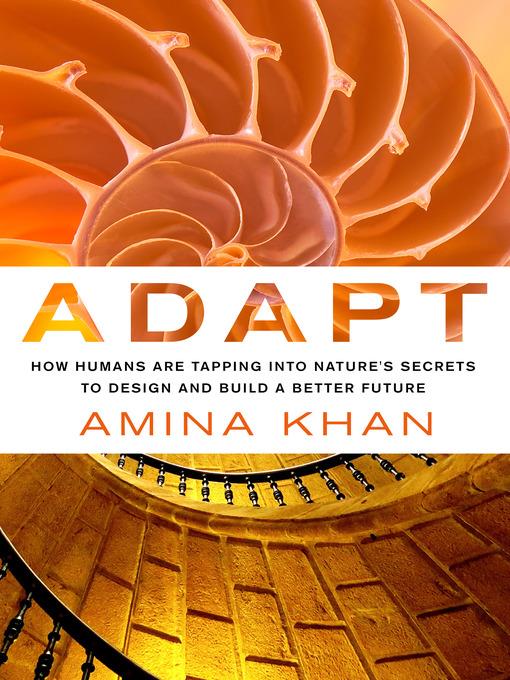
Adapt
How Humans Are Tapping into Nature's Secrets to Design and Build a Better Future
کتاب های مرتبط
- اطلاعات
- نقد و بررسی
- دیدگاه کاربران
نقد و بررسی

Starred review from March 15, 2017
Los Angeles Times science writer Khan debuts with a richly detailed account of biologically inspired engineering.Snakes that fly; geckos that walk on walls; blindfolded seals that track swimming objects by following their invisible wakes. These are among the -weird and wonderful- discoveries in nature that are helping scientists find ways to improve human technology, writes the author of this meticulous, well-written book. Following researchers from Woods Hole to an African desert, she reveals how cutting-edge, multidisciplinary research is harnessing the efficiency of nature's -most astounding innovations- to make human life better -in a world where we're running out of resources, in which we need to learn to live sustainably.- Grouping her stories into thematic sections--materials science, mechanics of movement, architecture of systems, and sustainability--she offers lucid, engaging discussions of a remarkable range of scientific work. Consider the cuttlefish, a cousin of the octopus. A shape-shifter with the many-fingered face of H.P. Lovecraft's fictional god, Cthulhu, the creature can blend in to its surroundings by changing colors and patterns (with an obvious application to camouflage). It uses the same color-changing to hypnotize prey. Other stories show how scientists are building robots that mimic the gecko's ability to cling to smooth walls (for possible use in disaster zones); refining hydrogen-producing artificial leaves that can serve as clean, renewable energy sources; and studying mound-building termites to inform human architecture. Khan explores fully the science behind nature's many innovative abilities and how it is being harnessed. At the same time, she offers fascinating portraits of scientists at work--e.g., the ant researcher who studies the -personalities- of some 300 ant colonies in annual visits to the Southwest and two physicists whose dead-serious study of termite mounds is offset by their hilarious -odd-couple- behavior, reminiscent of the TV sitcom Parks and Recreation. These well-crafted tales of bio-inspired innovation will entrance general readers and warrant the close attention of scientists and technologists.
COPYRIGHT(2017) Kirkus Reviews, ALL RIGHTS RESERVED.

March 1, 2017
The world is full of obstacles. It?s also full of solutions, if one knows where to look. Increasingly, diverse engineers, architects, biologists, chemists, city planners, physicians, and physicists are turning to nature for inspiration in solving perplexing problems. From the energy efficiency of towering termite mounds to the shape- and color-shifting properties of cuttlefish, to intriguing capabilities of many other marine and land animals as well as insects and plants, all provide a nearly limitless and largely untapped resource for scientists striving to understand how to do everything from regenerating limbs to rescuing disaster victims. Terms such as biomimicry and bioinspiration may not be part of the general lexicon, but Khan introduces the innovative and daring scientists who are plumbing the depths of nature to bring these concepts into the mainstream. As a science writer for the Los Angeles Times,Khan brings to her focus on health and technology a journalist?s demands for authenticity and experience as well as a storyteller?s desire to enthrall an audience. Hopeful and exciting reading for the future of personal and planetary challenges.(Reprinted with permission of Booklist, copyright 2017, American Library Association.)

























دیدگاه کاربران